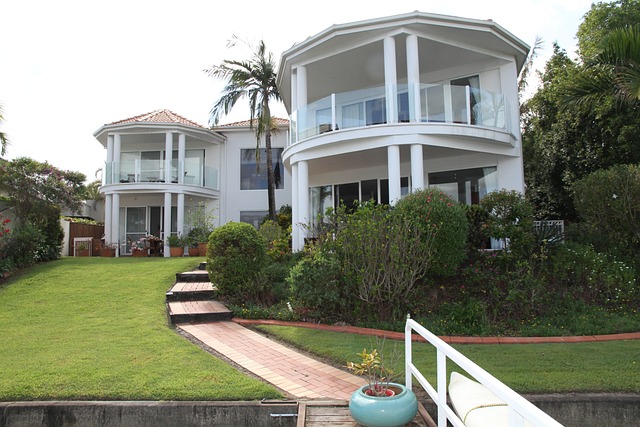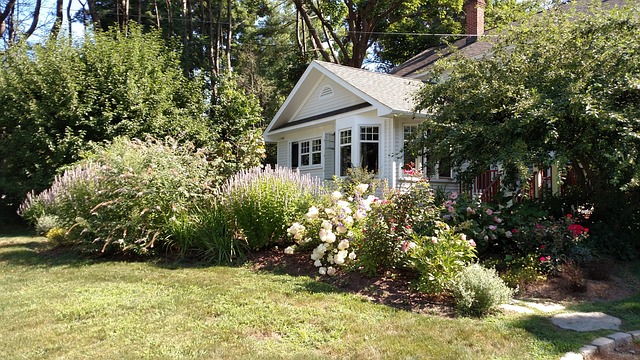When done correctly, front yard landscaping may enhance curb appeal and increase the value of your house. It may also be a gratifying experience. However, certain front yard landscaping ideas might be expensive, particularly if you go into it blindly or don’t consider your expenses. Prior to digging or paying with a credit card at your neighborhood garden shop, consider these 11 low-cost front yard landscaping options to save significant savings.

- Steer clear of annuals
Colorful annual plants like impatiens and petunias are great for adding splashes of color to planting beds and containers. But they’ll only endure as long as your current growing season; they won’t last the winter in the majority of the US. Buying annuals each year may become costly and time-consuming. Perennial plants, on the other hand, are a more cost-effective and long-lasting choice for front yard landscaping.
- Use Big Grasses to Fill up Gaps
Front yard landscaping ideas with lovely texture and movement may be achieved with tall ornamental grasses like Indian grass (Sorghastrum nutans), beak grass (Diarrhena obovata), or switchgrass (Panicum virgatum). They also grow quickly, so you can get them in less expensive one-gallon pots. They will eventually fill up any gaps and reach full size.

- Limited Plant Types
Purchasing no more than five different kinds of plants is a straightforward front yard landscaping tip, despite the temptation to buy a wide selection of plants from the garden shop. Three different kinds of perennials, two bigger kinds of shrubs, and one sort of evergreen will all help keep prices down while effectively filling a space.
- Plant Densely to Remove Weeds
Plant in a thick enough way to cover the whole ground to reduce the need for expensive yard maintenance. Certain plant species thrive in conditions with plenty of sunshine, moisture, and open soil. Weeds may be minimized by utilizing a combination of groundcovers, perennials, and bigger shrubs in a naturalistic design.
- Use Cardboard to Discourage Weeds
Before planting and spreading mulch, cover exposed soil with cardboard to create a biodegradable weed barrier. By using cardboard, you may prevent weed development while allowing moisture to seep into the soil. A weed-free landscape may be maintained by replacing the mulch and cardboard every few years.
- Utilize Offers
Planting is best done in the spring when the weather is warm and the allure of being outside after a long winter is strong. But if you wait to buy your plants until late summer or early autumn, when large box shops and garden centers are trying to clear out their inventory, you may save hundreds of dollars.
- Split to Get Free Plant Multiplication
Many established yards already contain a wide range of long-lasting plants that were planted by past owners. Many of these plants, including peonies, hostas, and grasses, benefit from huge clumps being divided. Plant division in early spring and replanting in barren places of the garden before buying more the next growing season is an inexpensive front yard landscaping tip.
- Maintain Contained
By employing pots and planted containers, you may save thousands of dollars instead of completely landscaping your yard. utilize clusters of containers to add color and flair, and utilize rock, sand, or pebbles as landscape filler in dry climates. Similarly, for a low-maintenance but lush appearance in damper areas, plant non-invasive groundcovers like perennial geranium (Geranium macrorrhizum) or wild ginger (Asarum canadense) in place of rocks.
- Grow from Seed
It may be quite economical to establish a garden from seed if you have the patience and time. Native wildflowers are a superior addition to perennial seed mixes that are resistant to drought and other unfavorable weather conditions. This results in both the establishment of important animal habitat and a reduction in maintenance costs.

- Establish a No Mow Area
Lawns need hundreds of dollars a year to maintain their attractive appearance since they are thirsty. To save money, think about front yard landscaping ideas using lawn substitutes like clover, buffalo grass, or a combination of wildflower seeds. Once established, you may stop using the lawnmower and watering every day! - Construct Living Walls
Whether made of conventional wood, plastic, or metal, installing and maintaining a fence requires a lot of money and work to keep in excellent condition. Instead, plant a live hedge or fence to reduce both the initial and ongoing expenditures. Well-liked evergreens that withstand drought, like juniper and arborvitae, also serve as sound barriers. Shrubs with flowers, such as ninebark, provide an unbreakable wall of color all year long.
